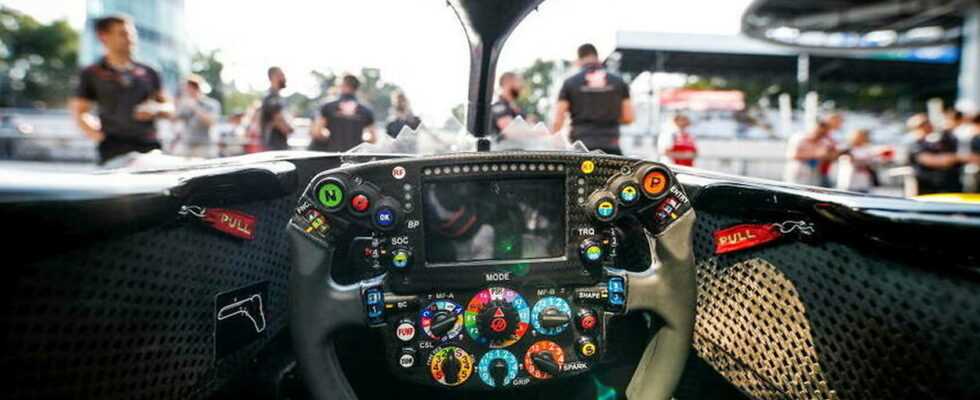Lhe Formula 1 is a competitive sport which, like all top-level sports, requires specific and intensive physical preparation. The physical impact of driving a single-seater on the human body is colossal, both on the articular, cardiovascular and neurological levels, it takes years of competition to prepare the body to undergo such attacks.
The career of an F1 driver most often begins during childhood with the practice of Karting, then over time in different categories of car racing. Throughout growth, the body adapts and shapes itself according to the constraints it faces, this is how the practice of car racing, before and during growth, will gradually shape mechanics. bodies of future pilots.
Russian mountains
A Formula 1 car can reach a speed of 360 km/h and accelerate from 0 to 100 in 2.5 seconds, which subjects the body to an acceleration of 2G. The worst for the pilots is however not the acceleration but the braking, thus decelerating from 200 km/h to a complete stop can be done in only 6.5 m, which generates up to 5G (in a car tourism deceleration is only 1G). That’s not all! When cornering, lateral acceleration can reach 6G.
And all this is not without repercussions on blood circulation: the blood flow is directed towards the brain during acceleration, but, conversely, it takes the direction of the legs during braking, which is not not without consequences on vigilance and cerebral reactivity. Throughout the races, the pilots chain accelerations and braking hundreds of times, which amounts to a roller coaster for two hours without stopping.
To limit the mass effect of blood circulation, Formula 1 drivers must strengthen the muscles that regulate flow distribution: the abdominal muscles. And to better resist the forces of lateral accelerations, they must strengthen the muscles of the trunk. It is sometimes difficult to breathe at these levels of G, some pilots hold their breath while driving, which requires specific training (race at altitude, endurance in apnea).
permanent whiplash
If the body of the pilots is rigorously harnessed to the seat of the single-seater, the cervical spine is the region of the body most constrained by the G forces. The mechanism is the same as during road accidents which cause “whiplash” during a violent deceleration. The cervical spine of Formula 1 drivers withstands a load of up to 30 kilos.
To manage to keep the head in the axis, and so that it oscillates as little as possible, the pilots must submit to a very intensive muscle strengthening of the neck muscles. This is how we can observe an increase in the perimeter of the neck as the years of competition and hours of training progress.
The four limbs put to the test
Driving a Formula 1 single-seater also requires training its four limbs to withstand repeated efforts. If turning a steering wheel at low speed will require little energy, turning it at high speed is another matter. Drivers must exert immense effort to combat lateral G-forces when turning the steering wheel, on average 15 kilos (2 packs of 6 bottles of water), and this approximately 1,000 times per race. The lower limbs are not to be outdone since it is necessary to apply approximately 60 kilos of force to push the brake pedal and this, 250 times per race.
A marathon runner’s heart
Cardiovascular fitness is crucial for Formula 1 drivers. The races are long and grueling – they last on average two hours – and it takes real endurance to fuel the brain and muscles for that long. In addition, the pilots are subjected to thermal stress: the flame-retardant suits and the integral helmet interfere with the thermal regulation of the body by trapping the heat. Thus, on the hottest circuits, the temperature in the cockpit can reach 60 degrees and the pilots can lose up to 5% of their weight during the competition.
Extreme sweating causes a loss of blood volume that cannot be compensated by water absorption and will result in less oxygen to the brain. Concentration, alertness or even reactivity may be affected by this drop in cerebral oxygenation. This drop in blood volume will then lead to an increase in heart rate in order to properly distribute oxygen in the vital organs as well as in the muscles. Heart rate measurements taken on racing drivers average between 140 and 190 beats per minute, which would not be bearable without suitable training.
Beware of the rebound phenomenon
Last specific subject of Formula 1 – and especially this season with the rebound phenomenon from which the new single-seaters suffer – the impact of vibrations. These vibrations would affect cognitive and motor faculties, thus causing fatigue and piloting errors. They are still poorly understood, but studies are underway to better understand their impact on the brain.
Formula 1 drivers are athletes in their own right, subject to specific and rigorous training. They must also follow a strict and healthy diet in order to keep up with the pace of the race, which is very energy-intensive, and not to gain weight so as not to impact the performance of their single-seater. Formula 1 is one of the few mixed sporting disciplines and it is hoped one day to see women competing in single-seaters alongside men. Many still doubt that a woman can develop physical performance similar to men, but some teams – Alpine in the lead – are determined to do everything to succeed in placing a woman in a Formula 1 seat one day.
